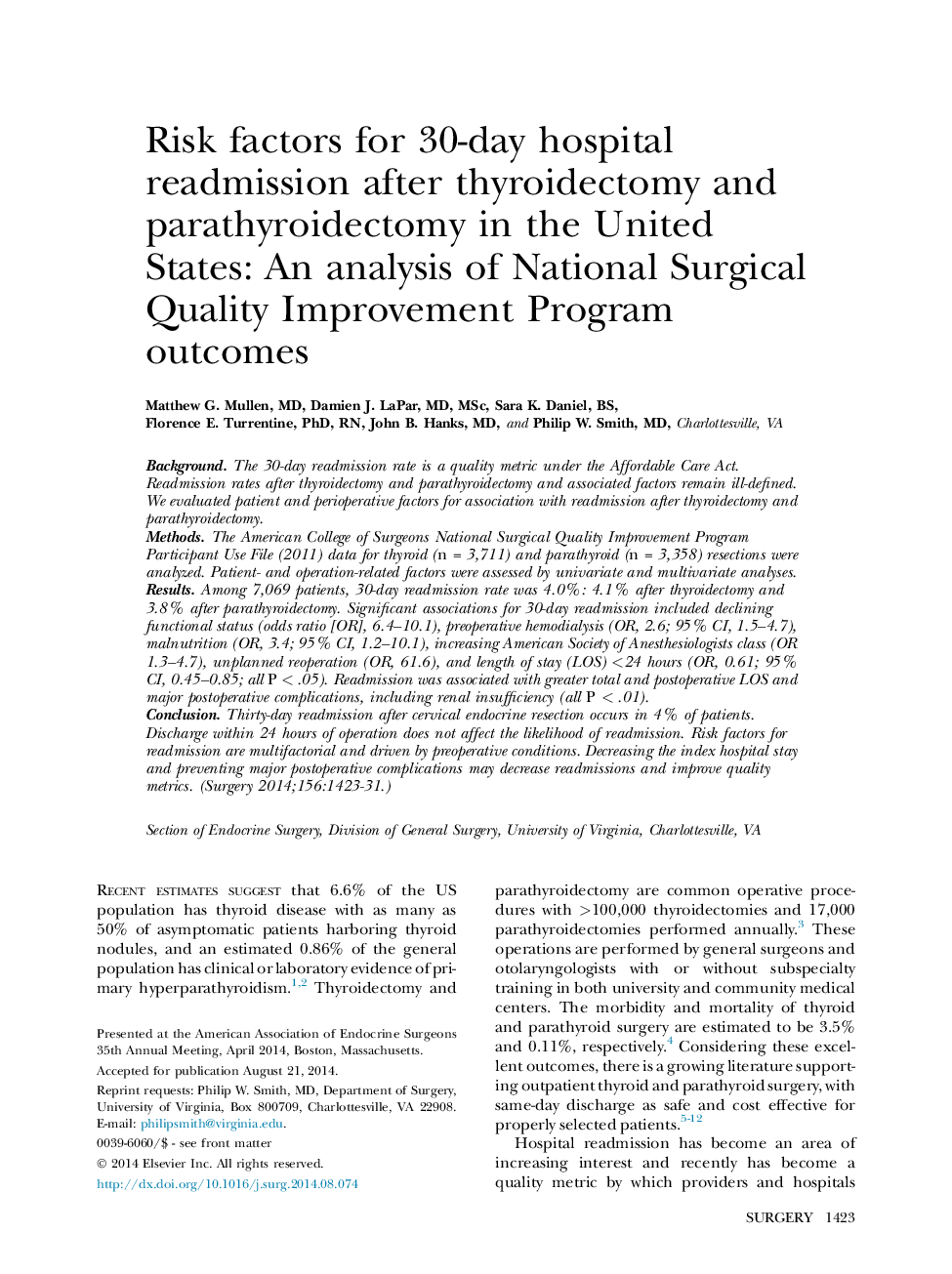| Article ID | Journal | Published Year | Pages | File Type |
|---|---|---|---|---|
| 4307429 | Surgery | 2014 | 9 Pages |
BackgroundThe 30-day readmission rate is a quality metric under the Affordable Care Act. Readmission rates after thyroidectomy and parathyroidectomy and associated factors remain ill-defined. We evaluated patient and perioperative factors for association with readmission after thyroidectomy and parathyroidectomy.MethodsThe American College of Surgeons National Surgical Quality Improvement Program Participant Use File (2011) data for thyroid (n = 3,711) and parathyroid (n = 3,358) resections were analyzed. Patient- and operation-related factors were assessed by univariate and multivariate analyses.ResultsAmong 7,069 patients, 30-day readmission rate was 4.0%: 4.1% after thyroidectomy and 3.8% after parathyroidectomy. Significant associations for 30-day readmission included declining functional status (odds ratio [OR], 6.4–10.1), preoperative hemodialysis (OR, 2.6; 95% CI, 1.5–4.7), malnutrition (OR, 3.4; 95% CI, 1.2–10.1), increasing American Society of Anesthesiologists class (OR 1.3–4.7), unplanned reoperation (OR, 61.6), and length of stay (LOS) <24 hours (OR, 0.61; 95% CI, 0.45–0.85; all P < .05). Readmission was associated with greater total and postoperative LOS and major postoperative complications, including renal insufficiency (all P < .01).ConclusionThirty-day readmission after cervical endocrine resection occurs in 4% of patients. Discharge within 24 hours of operation does not affect the likelihood of readmission. Risk factors for readmission are multifactorial and driven by preoperative conditions. Decreasing the index hospital stay and preventing major postoperative complications may decrease readmissions and improve quality metrics.
